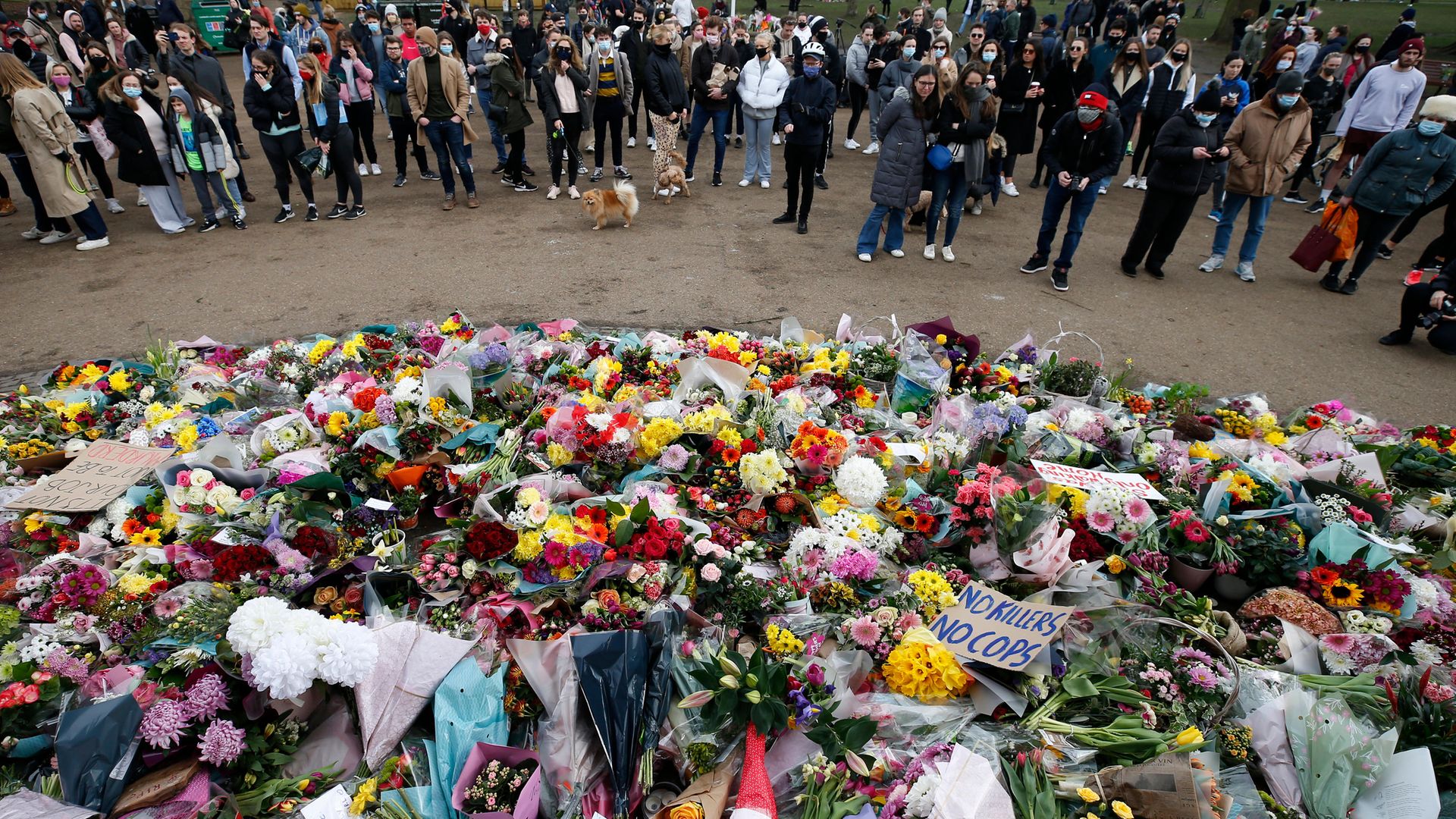
The outpouring of women’s testimony prompted by the murder of Sarah Everard must create change, or the fury will become just a fact of life.
Occasionally, an event in the world will bring such a keen sorrow that to let it pass without demanding change would feel like an act of desecration. Sarah Everard’s murder was one such event.
The asymmetry is grotesque; to the man who killed her, she’s just another dead girl; the people who loved her have lost their whole world. Sometimes we mischaracterise vulnerability when we talk about sexual violence. It’s not being a woman that makes you vulnerable to an act of random violence; anyone who loves anyone else will be destroyed by it.
Yet as anxiety over her disappearance curdled into the certainty of her death, the collective outrage was among women, and had many facets: this is why we walk in fear on dark streets, go running in pairs. This is why street harassment is never experienced as casual banter.
It is not because abductions happen constantly, but because they happen at all, that so many encounters and interactions carry a trace of threat that can never be neutrally evaluated, can only be escaped.
“Why are you so threatened, it’s only a very few of us?”, asked (some) men. Others asked on social media what they could do to help, if they saw a woman walking alone – cross the street? Start a phone call of their own? It wasn’t really the point; women were demanding the right to live without fear.
It was a huge demand, and the tragedy deserved nothing less. But if power concedes nothing without a demand, that demand has to be of power: the world cannot change how safe I, or you, feel. The world has to change itself.
The events of the subsequent days reminded me of the phrase used in 70s books about scriptwriting: “a monkey wrench is thrown” – there’s your hero, ambling along, and something happens to bring his world screeching to a halt. Not only does he suddenly have to go on a journey, or have his boss fight, but the mountain is much higher, the boss much uglier, than he ever knew.
The hero in this analogy, by the way, is feminism: it actually wasn’t just ambling along, it had plenty on its mind – domestic violence has reached epic proportions during lockdown – 259,324 offences flagged just in the period March to June 2020, successful convictions for rape at a 21st century low, a report by UN Women finding 97% of women aged 18 to 24 have experienced sexual harassment.
I laughed – not grimly, with genuine mirth – when I saw this described as a “majority” in headlines. Sixty two percent, that’s a majority; 97% is an A**. It’s all of them. So it would be absurd to say that women have been unaware of any problem.
Yet a few images, some memories, and maybe some words, have told a more urgent story than any of these numbers managed. A woman, Patsy Stevenson, pinned down by police in high-vis as she attended the vigil for Everard in Clapham Common – contrasted on some platforms with the light-touch policing a week ago of some Rangers fans.
Rumours of the police behaving disrespectfully when they found Sarah Everard’s body irresistibly recalled the murder of two sisters, Nicole Smallman and Bibaa Henry, who were found dead in a Wembley park last year by officers who allegedly took selfies by their bodies. One is compelled, too, to recognise the different levels of compassion bestowed on women according to their skin colour, not just from the police but the entire media landscape.
Then Kit Malthouse, minister for crime and policing, patiently explained to various broadcasters why it actually made sense that you could get a longer sentence for harming a statue than you could for rape, because the statue had “emotional, symbolic value”.
One at least had to consider the possibility that there are institutions actively resisting change; that there is a reason women don’t report sex crimes to the police; that there is a political class that thinks rape doesn’t have much emotional, symbolic value.
There is a reason Reclaim These Streets is such a familiar slogan to those of us who can remember the 1980s. The answer is not to collapse into weariness, but to acknowledge that it’s not by accident that things don’t change. There are forces ranged against equality that it is often convenient for a constructive, big-umbrella movement to ignore, but which are becoming too obvious not to take head-on.
A fundamental question to ask, which applies to the #MeToo movement as much as to the current shockwave of women’s testimony, which goes back to Laura Bates’s Everyday Sexism project in 2012, is how, and when, testimony creates change. Because if testimony can’t create change, it’s more than just a missed opportunity – it becomes a fact of life, the outrage becomes the norm, and as such, an inevitability, a crime without any culprit, or with so many culprits that the concept becomes moot.
The intellectual journey of Bates and the Everyday Sexism project is fascinating and instructive: it started with women sharing personal stories, from being ogled at the age of 12 by a whole construction site, to being undermined in a meeting at age 52.
It was immensely powerful, and I think remains so, galvanising people into action against aggressions which, without that solidarity, may have felt too micro. Where the creator and author went more recently, via a lot of work in schools, is her book last year, Men Who Hate Women – note the “who”.
This isn’t “all men are bastards”, it is a painstaking picture of of violent misogyny, tracing and connecting it from sub-Reddit threads to Incel terrorist attacks, drawing out the overlaps, both in tropes and in personnel, between misogyny and white supremacism, between viral YouTube videos and Canadian killing sprees.
It makes a realistic, quite pessimistic account of the direction we’re headed in, in which misogynist language and imagery are increasingly prevalent, and violence tracks that prevalence with a new impunity. But it asks much more searching questions than “why are some men violent?”, and “how many of those ones are there?” What commercial, corporate, political and civic decisions are being made that endanger women, who is making them and how could they be resisted?
The fact is, abductions and murders are rare, but there are institutional conditions that both allow them and contribute to a culture of fear among women. There are problems that we’ve talked about for years – a policing and judicial culture of disbelieving women or minimising their experience, poor to non-existent support for victims of domestic violence, a deficit which has become so much more deadly over the past 10 years of austerity.
This intersects with new threats that we don’t do enough to acknowledge or counter – a men’s rights activism movement that segues into a structured philosophy of violence against women, and is, like all online movements, incredibly visible if you care to look, and comfortingly invisible if you don’t. Behind each of these trends is a set of choices, made at organisational level, rarely by violent men, not even necessarily by men, against the interests of women’s security and emancipation. It’s time to start joining the dots.
What do you think? Have your say on this and more by emailing letters@theneweuropean.co.uk










